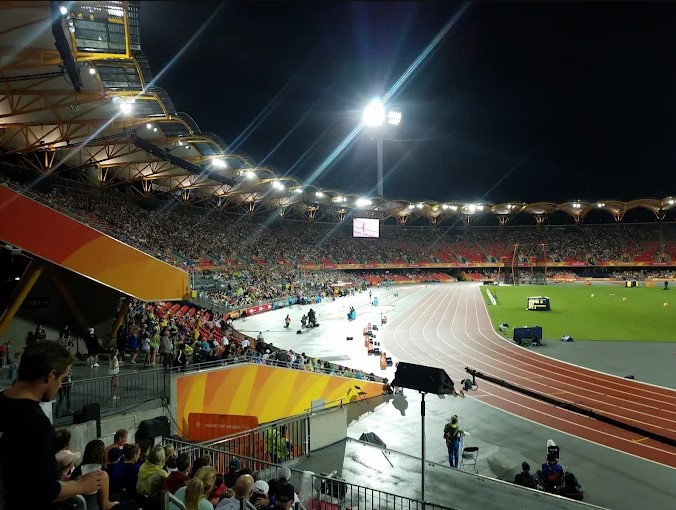Metricon Stadium, also known as Carrara Stadium, is one of Australia’s most prominent venues for Australian rules football, cricket, and entertainment events. Located on the Gold Coast in Queensland, the stadium is the home ground of the Gold Coast Suns, an AFL team, and has hosted major events such as the 2018 Commonwealth Games. A key feature that often draws attention from fans, athletes, and commentators alike is the boundary length of the playing surface.
Table of Contents
This article explores the dimensions of Metricon Stadium, focusing on its boundary length, how it compares to other stadiums, its impact on the game, and factors that influence its design.
1. Metricon Stadium Overview
Metricon Stadium is a versatile and modern sports venue. Below are some general details about the stadium:
| Feature | Description |
|---|---|
| Location | Carrara, Gold Coast, QLD, Australia |
| Opened | 1987 (redeveloped in 2011) |
| Capacity | Approx. 25,000 spectators |
| Main Tenant | Gold Coast Suns (AFL) |
| Surface | Natural grass |
The stadium underwent major redevelopment in 2011, bringing it up to international standards. Part of this redevelopment included refining the playing surface and boundary dimensions.
2. Dimensions and Boundary Length
Unlike soccer or rugby fields, which are relatively uniform, Australian rules football fields can vary in size. This flexibility allows clubs and stadiums to design fields that suit strategic play styles or space constraints.
Field Dimensions at Metricon Stadium
| Dimension | Measurement |
|---|---|
| Length (goal to goal) | 160 meters |
| Width (wing to wing) | 134 meters |
| Boundary Length (approximate) | 470 meters |
How Boundary Length is Calculated
The boundary length refers to the total perimeter of the playing field. Assuming an elliptical or oval shape—a standard for AFL grounds—the perimeter can be estimated using the following mathematical formula: Perimeter of an ellipse≈π×[3(a+b)−(3a+b)(a+3b)]\text{Perimeter of an ellipse} \approx \pi \times \left[ 3(a + b) – \sqrt{(3a + b)(a + 3b)} \right]
Where:
- aa = semi-major axis = half of the length (80 m)
- bb = semi-minor axis = half of the width (67 m)
Plugging the values: Boundary Length≈π×[3(80+67)−(3×80+67)(80+3×67)]≈470 meters\text{Boundary Length} \approx \pi \times \left[ 3(80 + 67) – \sqrt{(3 \times 80 + 67)(80 + 3 \times 67)} \right] \approx 470 \text{ meters}
This matches general estimates from AFL and stadium sources.
3. Comparison with Other AFL Stadiums
To understand Metricon Stadium in context, it’s useful to compare it with other major venues.
| Stadium | City | Length (m) | Width (m) | Boundary Length (approx. m) |
|---|---|---|---|---|
| MCG (Melbourne) | Melbourne, VIC | 160 | 141 | ~480 |
| Optus Stadium | Perth, WA | 165 | 130 | ~475 |
| Adelaide Oval | Adelaide, SA | 167 | 124 | ~470 |
| Metricon Stadium | Gold Coast, QLD | 160 | 134 | ~470 |
| SCG (Sydney) | Sydney, NSW | 155 | 136 | ~460 |
As seen above, Metricon’s boundary length is slightly below the MCG and comparable to Optus and Adelaide Oval.
4. Impact on Gameplay
The size and shape of a stadium have subtle but significant impacts on AFL gameplay:
Strategy and Movement
- Wide Fields (e.g., Metricon) favor fast, expansive ball movement, making it ideal for teams with pacey wingers.
- Longer Fields can support endurance-based play styles and make defensive structures more important.
Kicking Distance
- Longer boundaries increase the difficulty of scoring from tight angles or on the run.
- They also allow for longer kicks down the line, opening up strategic switches across the field.
Fatigue and Rotation
5. Influence of Stadium Design
Designing a stadium like Metricon involves balancing space, crowd proximity, and multipurpose functionality.
Factors Considered
| Factor | Influence on Boundary Length |
|---|---|
| Land availability | Defines max stadium footprint |
| Viewing experience | Oval vs. rectangular trade-offs |
| Multi-sport usage | Accommodates cricket & concerts |
| Safety zones (run-off areas) | Adds space beyond boundary line |
Aesthetic and Branding
The boundary and shape of the stadium also contribute to a team’s home-field identity. The Gold Coast Suns often leverage their home ground’s dimensions to gain tactical advantages over visiting teams unfamiliar with its layout.
6. Evolution of Metricon Stadium
Since its redevelopment for the 2011 AFL season and the 2018 Commonwealth Games, Metricon Stadium has embraced international standards.
Enhancements Post-2011
- Increased playing area
- Improved turf and drainage systems
- Modern lighting and scoreboards
- Expanded seating closer to the boundary line
These upgrades have helped maintain the 470-meter boundary while ensuring player safety and optimal fan engagement.
7. Metricon Stadium Beyond AFL
Metricon isn’t just an AFL ground. It has also hosted:
- Cricket matches (with temporary pitch installations)
- Athletics events (during the Commonwealth Games)
- Concerts and community festivals
This versatility necessitates a design that accommodates varied layouts while preserving the central oval format, thereby maintaining its 470-meter boundary length.
The boundary length of Metricon Stadium, approximately 470 meters, plays a pivotal role in shaping how the game is played on the Gold Coast. Comparable to other elite AFL venues, this dimension offers a balance between length and width that encourages fluid, fast-paced play. Whether you’re a fan, player, or architect, understanding the intricacies of boundary dimensions enhances appreciation for the sport and the engineering behind its great arenas.


